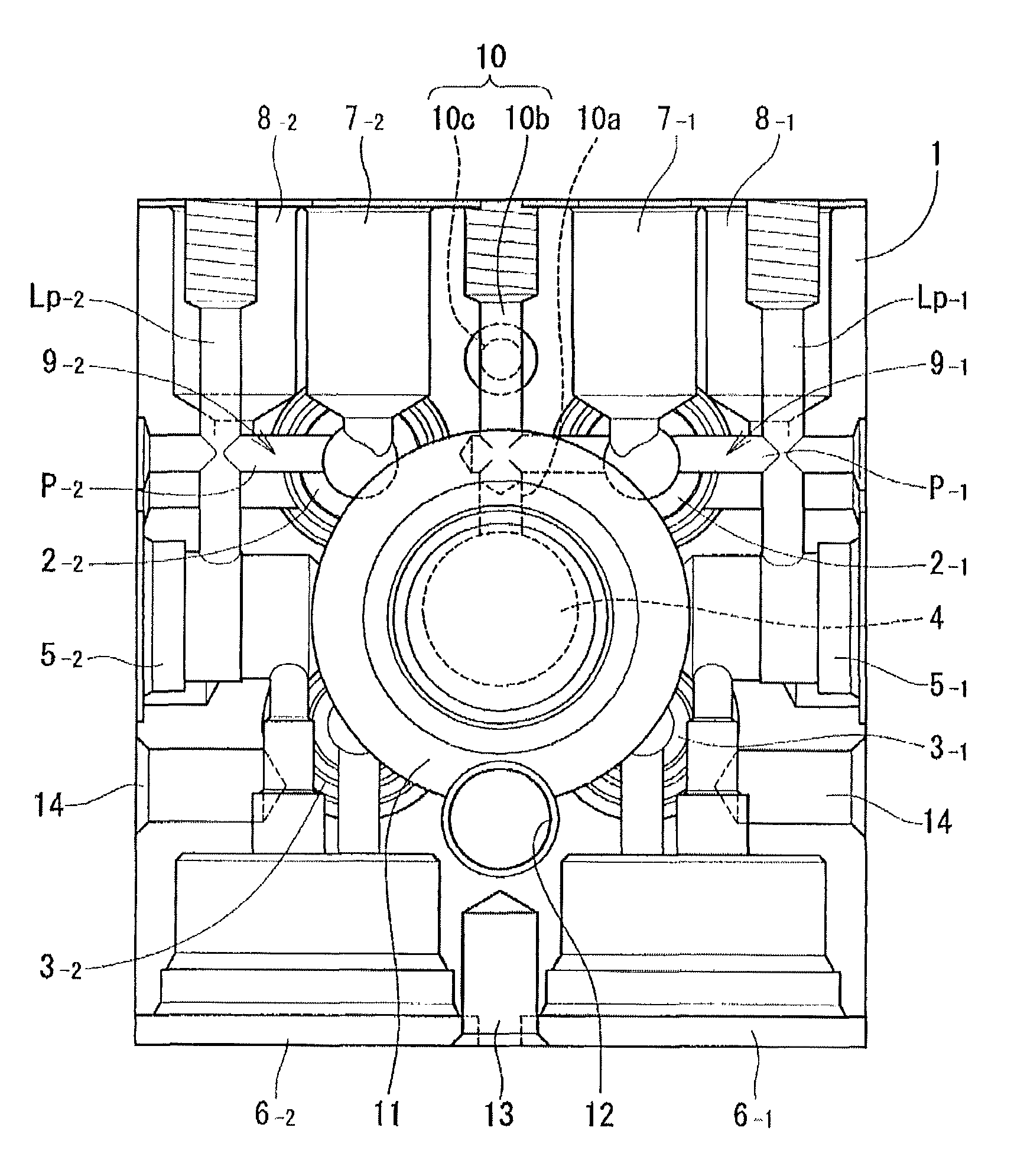Brake fluid pressure control unit
a technology of pressure control unit and brake fluid, which is applied in the direction of brake system, brake components, vehicle components, etc., can solve the problems of difficulty in standardizing processes, hydraulic pressure on the upstream side (on the master cylinder side) of pressure increase valves and pressure reduction valves cannot be detected by the pressure sensor, etc., to achieve the effect of improving productivity, increasing internal channels, and reducing costs
- Summary
- Abstract
- Description
- Claims
- Application Information
AI Technical Summary
Benefits of technology
Problems solved by technology
Method used
Image
Examples
Embodiment Construction
[0043]An embodiment of a brake fluid pressure control unit according to the present invention will be described below with reference to FIGS. 1 to 13 in the attached drawings. FIG. 13 shows an example of a brake fluid pressure control unit for a two-wheeled vehicle. This brake fluid pressure control unit 20 includes pressurizing sources 22_1, 21_2 (i.e., master cylinders in FIG. 13) activated by operating the left and right brake levers 21_1, 21_2 of the two-wheeled vehicle. These pressurizing sources 22_1, 22_2 are able to produce hydraulic pressures independently by individually operating the brake levers 21_1, 21_2 in the same order as above.
[0044]Additionally, the brake fluid pressure control unit 20 includes: hydraulic passages 24_1, 24_2 for first and second hydraulic systems, respectively, reaching to the wheel cylinders 23_1, 23_2, respectively; pumps (piston pumps or gear pumps) 25_1, 25_2 installed in the first and second hydraulic systems respectively; a motor 26 that dri...
PUM
 Login to View More
Login to View More Abstract
Description
Claims
Application Information
 Login to View More
Login to View More - R&D
- Intellectual Property
- Life Sciences
- Materials
- Tech Scout
- Unparalleled Data Quality
- Higher Quality Content
- 60% Fewer Hallucinations
Browse by: Latest US Patents, China's latest patents, Technical Efficacy Thesaurus, Application Domain, Technology Topic, Popular Technical Reports.
© 2025 PatSnap. All rights reserved.Legal|Privacy policy|Modern Slavery Act Transparency Statement|Sitemap|About US| Contact US: help@patsnap.com



